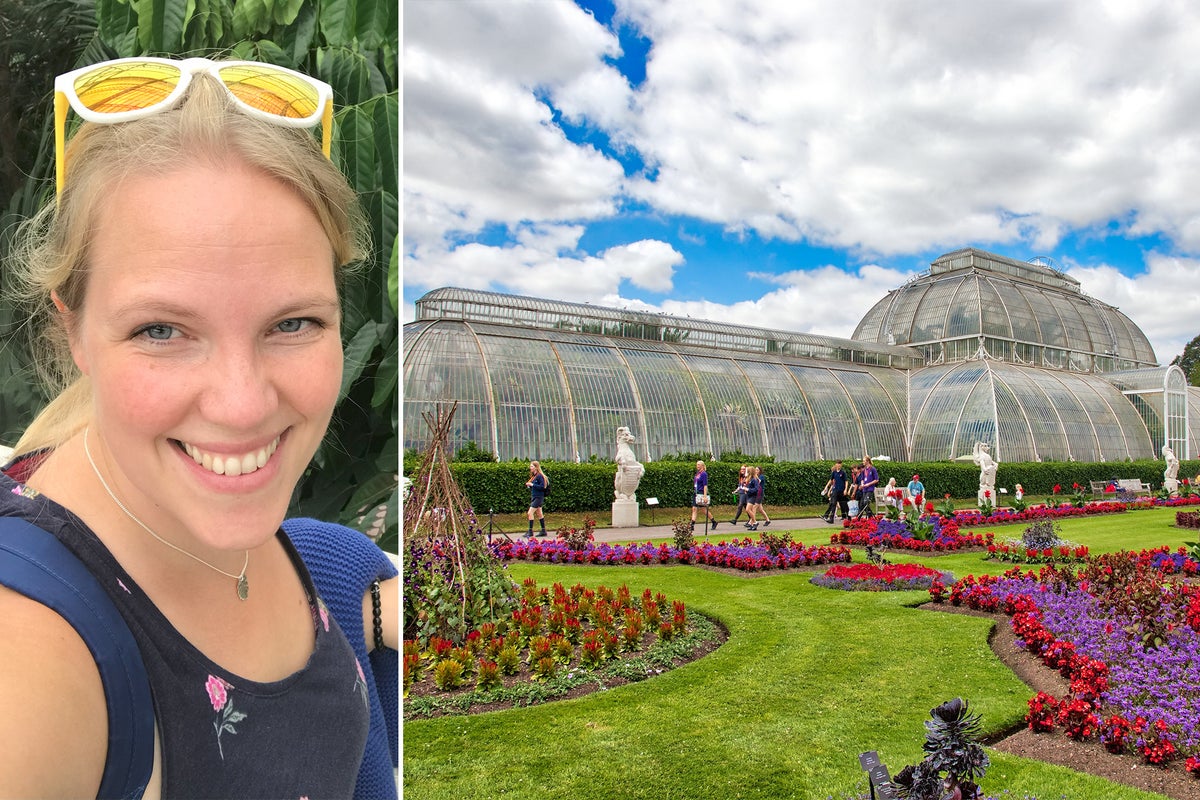Kew Gardens, near London’s Richmond Park, is iconic. And its most emblematic feature is the Palm House, which will be closing from 2027 for a five-year refurbishment – part of an ambitious bid by the Gardens to become climate positive by 2030.
The Palm House is the world’s largest surviving Victorian glasshouse and a symbol of the gardens’ innovative history. But the £50m project, that will include temporarily rehoming around 1,300 plants, is sorely needed.
It’s difficult to say which is more impressive: the grandiose glasshouse, with its whimsical spiral staircases, or the plants for which it was built. Encountering the glasshouse is rather like wandering through a rainforest and happening upon a crumbling historical monument, the white iron striking against lush greenery.
However, while the plants have thrived in the balmy temperatures within, the Palm House has not. The rust and corrosion is a result of the same conditions that keep the plants so healthy, and it’s hard to ignore.
As part of the makeover, the Grade I-listed building will have each of its 16,000 panes of glass replaced, while the frame will repainted in the exact shade used when it first opened to the public in 1848.
Perhaps this decay is symbolic of Kew’s place in British culture: at once enrapturing and frustrating. In its current iteration, Kew is certainly impressive, and is one of the most beautiful places to visit in the capital. But in order to retain its title of a world-class attraction, Kew needs to continue to innovate.
A mecca for botanists
Happily, there is plenty for the budding gardener to enjoy at present. The Gardens remain a mecca for botanists, home to numerous plants that are now considered extinct in the wild and many more that are critically endangered. Alongside the Chelsea Flower Show, it remains one of the best places for a green-fingered day out – it is easily one of the best things to do with children during the summer holidays.
And while London is full of exciting places to visit, Kew Gardens stands out as one of only four places in the city designated as a Unesco World Heritage Site. It is a living monument to centuries of changing fashions and fancies, told through exquisite horticulture.
As an ecologist, you only need to say the words “rare plant” to me, and I’ll be there. But if this sounds too academic, fear not. Kew has a lot more to offer than just its plant collections.
Younger visitors have long delighted in splashing and climbing their way through the Children’s Garden, while the wheelchair-accessible Treetop Walkway takes visitors high up into the canopy.
Guests who are happier keeping their feet on the ground can find numerous walking trails throughout the site (plus picturesque picnic spots).
With over 300 acres to explore, it’s easy to forget you are still in London, just a stones’ throw from the hustle and bustle of Kensington. It’s equipped with numerous greenhouses, cafes, restaurants, a library and a gallery, meaning there is plenty to keep you occupied on a rainy day.
Cacti and waterlilies
One of my favourite things to do while exploring Kew is to visit the Princess of Wales Conservatory. Within, guests can wander through ten different climatic areas, from a wet tropical zone to an arid desert, complete with prickly cacti.
The conservatory is also home to a fabulous species of giant waterlily, Victoria boliviana, whose huge pads float like boats on the pond. These are particularly special as the variety was discovered at Kew itself.
Visitors used to be able to spot the glasshouse’s very own pest control unit here, comprising a burly group of water dragons. These striking lizards were a delight to watch, lazing around or skittering between plants, taking their role of bug patrol very seriously. Sadly, the creatures are no longer resident in the spot – but wildlife, especially butterflies and bees, are in abundance.
What Kew needs to do
With the refurbishment, Kew is recommitting itself to preserving biodiversity and becoming more sustainable. Still, there’s more the Gardens could be doing.
I’d love to see more information around the gardens about Kew’s global research projects – from seed banks in the Alps to plant conservation in Angola.
The Eden Project, in Cornwall, is particularly good at signposting its work in this department, and Kew could learn something here. With approximately 2.45 million visitors a year, Kew’s potential for educating the public is vast and I believe this could be better expressed.
I’d love to see more interactive displays teaching visitors about environmental issues, or simply more information about how to make their own gardens a force for good in the world.
Visiting Kew Gardens is a remarkable, transformative excursion: a chance to explore the world’s landscapes for a fraction of the cost of a plane ticket. Once completed, the restoration of the Palm House will be a powerful symbol of a changing British institution.
What began as a collection of flowers has now become a frontline in the battle against climate change. The changes to the glasshouse are a clear message that we can create a better environmental future, while continuing to preserve our heritage.
Becky Searle is an ecologist and botanist, and author of the book Grow A New Garden.

